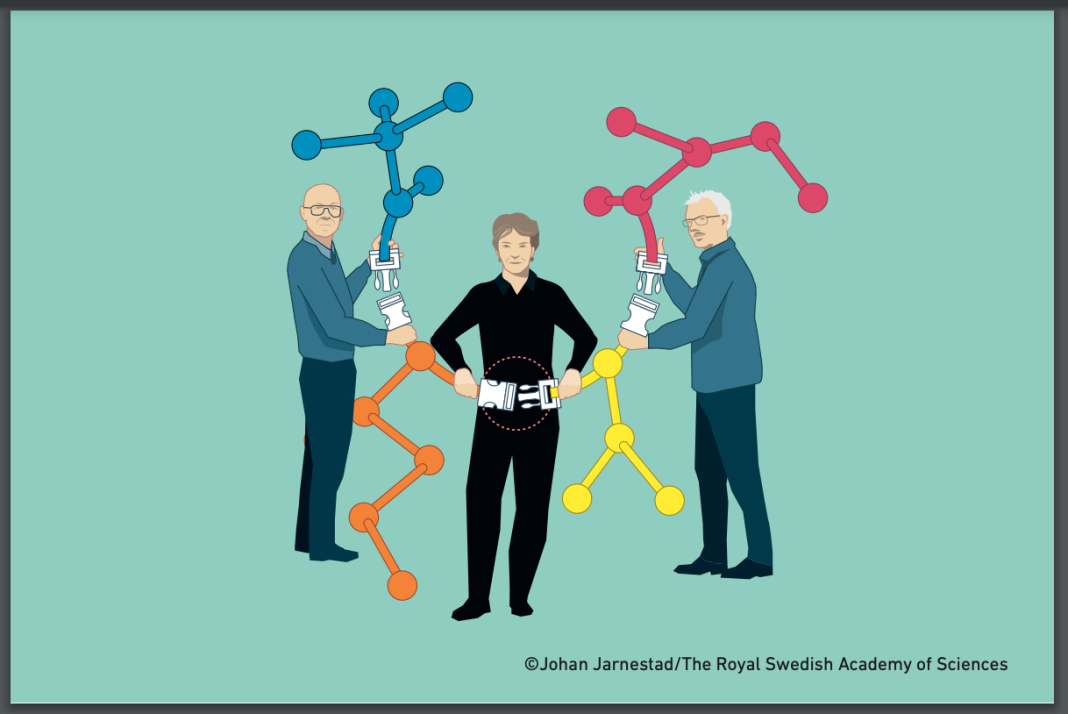The Nobel Prize in Chemistry was awarded to Carolyn Bertozzi, PhD, professor at Stanford University and a Howard Hughes Medical Institute (HHMI) investigator, Morten Meldal PhD, professor of chemistry at the University of Copenhagen, and Barry Sharpless, PhD, of Scripps Research Institute.
The three investigators received the award (Sharpless for the second time) for their work on “the development of click chemistry and bioorthogonal chemistry.”
Sharpless and Meldal laid the foundation for the functional form of chemistry—click chemistry. In it, molecular building blocks snap together quickly and efficiently. Bertozzi took click chemistry to a new dimension by utilizing it in living organisms.
Chemists have long had the desire to build increasingly complicated molecules. In pharmaceutical research, this often involves artificially recreating natural molecules with medicinal properties. These molecular constructions are generally time-consuming and very expensive to produce.
“This year’s Prize in Chemistry deals with not overcomplicating matters, instead working with what is easy and simple. Functional molecules can be built even by taking a straightforward route,” said Johan Åqvist, chair of the Nobel Committee for Chemistry.

Sharpless—who is being awarded his second Nobel Prize in Chemistry—started this field when, in 2000, he coined the concept of click chemistry. Click chemistry is a form of simple and reliable chemistry, where reactions occur quickly, and unwanted by-products are avoided.
Sharpless’ first Nobel Prize in Chemistry, awarded in 2001, was for his work on chirally catalyzed oxidation reactions.
Shortly afterward, Meldal and Sharpless (independently of each other) presented the copper catalyzed azide-alkyne cycloaddition. This is an elegant and efficient chemical reaction that is now in widespread use. Among many other uses, it is utilized in the development of pharmaceuticals, for mapping DNA, and creating materials that are more fit for purpose.
Bertozzi took click chemistry to a new level. To map glycans on the surface of cells, she developed click reactions that work inside living organisms. Her bioorthogonal reactions take place without disrupting the normal chemistry of the cell. These reactions are now used globally to explore cells and track biological processes.

Using bioorthogonal reactions, researchers have improved the targeting of cancer pharmaceuticals, which are now being tested in clinical trials.
While congratulatory festivities were happening on the West Coast and in Europe, some took to Twitter to express their best wishes. One message, congratulating Bertozzi, came from a relatively unconventional source. It was from Tom Morello, best known for his time as a rock guitarist with the band Rage Against the Machine. Perhaps unknown to some, Bertozzi is not only an amazing scientist, but she is also a talented pianist who played in a band with Morello (called Bored of Education) during her time on the Harvard campus.




